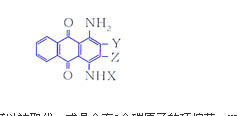Second, thermal sublimation transfer technology
Conventional thermal sublimation transfer refers to printing a sublimation transfer ink onto paper (or plastic film) by screen printing, and overlaying the printed paper (or film) with the fabric to heat, pressurize, or reduce. Pressure, the dye on the paper (or film) is sublimated and transferred to the fabric in a gas phase. In addition to fabrics, they can also be transferred to ceramics, metals and other products. The main feature of the dye-sublimation transfer printing technology is that the transfer image is vivid and colorful, and the effect is comparable to printing. Different from printing, the dye in the transfer ink is sublimated by heat and penetrates into the surface of the object. After the desublimation, a bright and colorful image is formed. Therefore, the thermal transfer products are durable and the images will not fall off.
Cracked and faded.
With the rapid development of high technology, thermal transfer technology and level have been further expanded and improved. Thermal transfer technology is widely used in computer image processing and design, and then the image is printed on paper (or film) through a high-speed and high-quality inkjet printer. In addition, the process of plate making can be omitted, and sublimation ink can also be applied to a plastic film and cut into ribbons for application in smart card printing technology.
The following three issues are discussed: fabric dye sublimation transfer technology; digital inkjet thermal sublimation transfer technology; smart card thermal sublimation transfer technology.
(I) Sublimation printing technology for fabrics
The method of printing on fabrics with dye-sublimation transfer papers is also called vapor-phase thermal transfer printing. The basic production method of transfer printing is to apply the dyestuffs to the ink first, and then print it into flower paper. Then, the paper and the fabric are overlapped together and heated, pressed or decompressed. The dye on the paper is in a vapor state and sublimation and transfer printing. To the fabric.
1. Sublimation transfer printing ink
Sublimation transfer printing ink is mainly heated by heat
(1) Dye
Sublimation dyes for transfer printing can be selected according to the following conditions:
1 dye molecular weight should not exceed 350 in general;
2 There is intermolecular force between the dye gas and fiber, and can diffuse into the fiber;
3 dye sublimation temperature below 200 °C is more appropriate;
4 The color fastness of the dye transferred to the fiber meets the wearing requirements;
5 Bright color on the fiber;
6 The dye has no affinity with the base paper.
Commonly used transfer printing dyes are vat dyes, azo dyes, cationic dyes, and the like.
a. Anthraquinone Dye Ink Formulas and Applications
The molecular structure of the dye is:

In the molecular formula, X is an alkyl group having 1 to 6 carbon atoms, which may be substituted or a cycloalkyl group having 6 carbon atoms. Both Y or Z may be an amino group, or one may be a cyano group and the other may be a hydrogen atom.
20 g of 1-amino-4-butylaminoindole-2-sodium acetate, 20 g of potassium cyanide, 50 sodium carbonate and 1000 g of water are heated to 80-90° C. until the product is completely precipitated from the original blue solution. until. The reaction mixture is then filtered, washed with water and dried to obtain a mixture of 1-amino-2,3-dicyano-4-butylamino hydrazine and a small amount of the corresponding 2- or 3-position mononitrile compound. body.
Five parts of the above dye mixture were put into a fine dispersion with 95 parts of the following solution in a ball mill. The solution includes 40 parts shellac, 50 parts methylated spirit, 8.5 monoethanolamine, 3.5 parts morpholine, 0.3 parts silicone defoamer and 15 parts water.
The ink was printed on a transfer base paper and dried, and then the transfer paper was contacted with the polyester fabric at 215°C for 20 seconds to obtain a very clear blue dyeing, with good resistance to water washing and light fastness. Good print fabrics can be obtained on other synthetic fibers and films such as polyamide, polyacrylonitrile, cellulose diacetate or cellulose triacetate.
Vertical Packing Machine, Vertical Packaging Machine
Food Machinery Co.,LTD , http://www.jinhongmachine.com